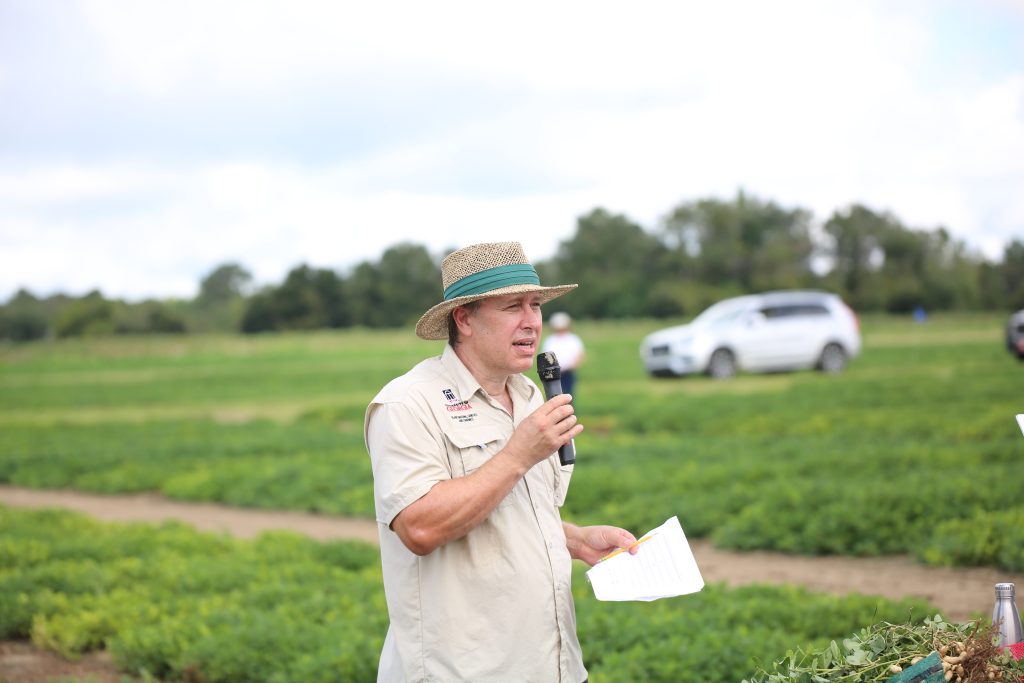 David Bertioli is a professor in the University of Georgia Plant Breeding, Genetics and Genomics program. He works closely with Soraya Bertioli in what is known as the wild peanut lab. Now to explain what the wild peanut lab is, let me take you back five or ten thousand years to South America when the first inhabitants were growing wild peanuts. That area is now known as Argentina and Bolivia.
David Bertioli is a professor in the University of Georgia Plant Breeding, Genetics and Genomics program. He works closely with Soraya Bertioli in what is known as the wild peanut lab. Now to explain what the wild peanut lab is, let me take you back five or ten thousand years to South America when the first inhabitants were growing wild peanuts. That area is now known as Argentina and Bolivia.
Wild peanuts are very small, and they spread on the ground, but at the time that was a nutritious crop for them. The inhabitants cultivated peanuts moving up and down during their migrations on the Eastern side of the Andes and they ended up cultivating two species together, which don’t normally grow together. In this way they encourage the formation of a hybrid and that hybrid between two species gave rise to all of the peanuts in the world. The fact that it’s a hybrid means that peanut has got that vigor. The peanut got that productivity that we love but the fact that it was just one hybrid probably that gave rise to all of the peanuts in the world. That means that it has phenomenally narrow genetics.
That’s the reason for peanuts being very susceptible to pests and diseases and being expensive to grow. It’s one of the most expensive row crops to grow because it needs protection. So, what we’re doing in the wild peanut lab is we are going back to the wild species to bring in especially pest and disease resistances.
What we do is we take two different species which are similar to the original ones but not the same ones. We hybridize them together in a process that mimics the original origin of peanut and then we hybridize those to peanut itself. We hybridize again and we do genetics and then use the information from the peanut genome project and at the end of our process which takes about 10 years we get lineages like this. Some of the peanuts produced in Georgia crossed with wild genetics brings in very strong resistance against things like leaf spot, rust fungus, tomato spotted wilt virus and nematode.
